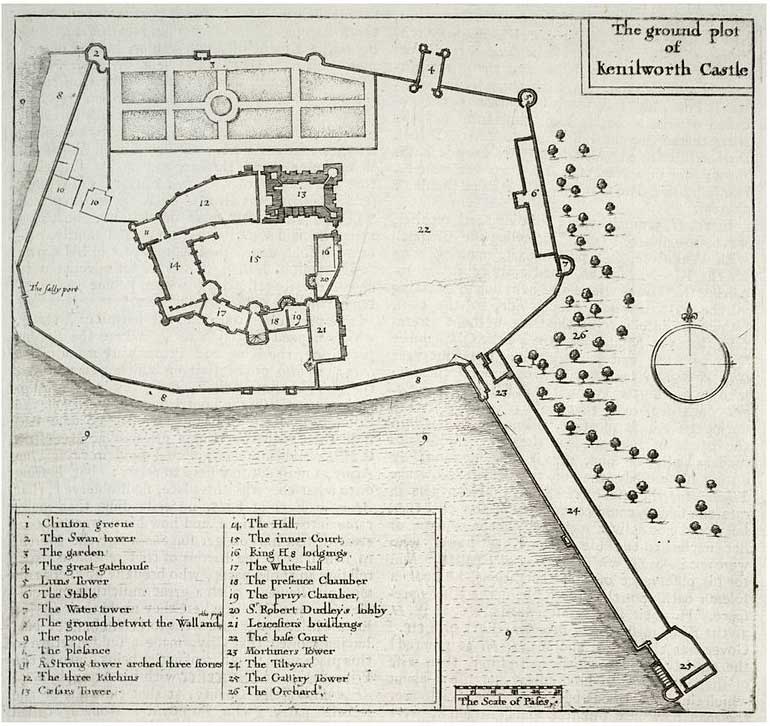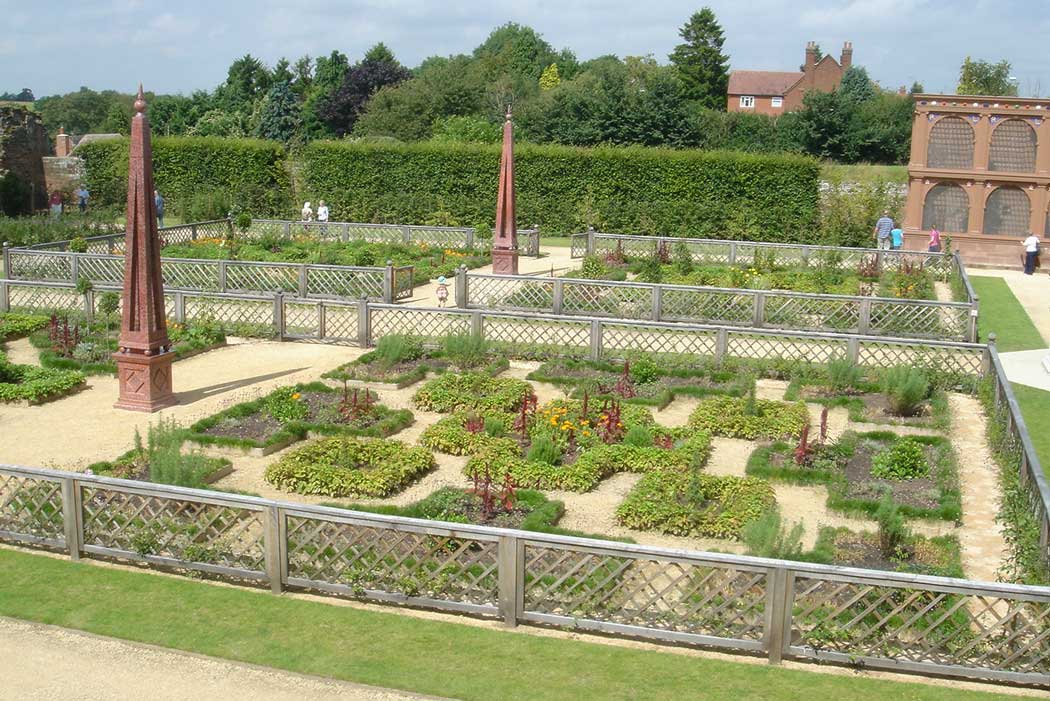Kenilworth Castle was built 50 years after the Norman Conquest and it has witnessed many important events in English history. It has been home to royalty and at least four kings have called the castle home. The castle sits amid countryside between Warwick and Coventry.
The castle played an important role in English history and in 1266 it was the site of the six-month-long Siege of Kenilworth, it was a base for Lancastrian forces during the Wars of the Roses, it was the scene of Edward II’s removal from the English throne and it is where Robert Dudley, 1st Earl of Leicester wooed Elizabeth I in 1575.
In the 1120s the castle was built by the Normans and during the 13th century, it was significantly enlarged by King John. In the late 14th century, John of Gaunt made a massive investment turning the castle from a medieval fortress into a comfortable palace and during the 16th century the Earl of Leicester expanded the castle in the Tudor style.
Unfortunately, in 1649 the castle was partially destroyed during the English Civil War and after this, it gradually fell into ruin.
What to see at Kenilworth Castle
Although the castle dates from Norman times, it was expanded considerably during the medieval and Tudor periods and a visit to the castle gives you a great insight into five centuries of English architecture.

It is accessible via the 15th-century Gallery Tower, southeast of the castle, which leads to the former tiltyard. The tiltyard was originally built as a causeway that was used for jousting tournaments.
After walking down the tiltyard, visitors enter the castle’s outer bailey through Mortimer’s Tower. Mortimer’s Tower was originally a Norman gatehouse that was extended in the 13th and 16th centuries but nowadays is mostly ruined.
The inner court consists of the 30m- (98 ft)-high 12th-century great tower with solid 5m- (16 ft)-thick walls. Although the tower has its origins in Norman times, it was expanded over the next several hundred years, like much of the rest of the castle. The great tower features Tudor-era windows that date from the 1570s.
The northern part of the castle’s inner bailey was built between 1372 and 1380 by John of Gaunt (Edward III’s son). The Great Hall is the most striking feature of this part of the castle and it appears to have been influenced by Windsor Castle, with the castle’s Oriel Tower based on Windsor Castle’s La Rose Tower. Other notable buildings later copied Kenilworth Castle with the Great Hall influencing the design of Bolton and Raby castles and Arundel Castle and Westminster Hall copying the great hall’s roof design.
![The Great Hall at Kenilworth Castle was built by John of Gaunt in the 14th century in the English Perpendicular style. (Photo: Damek (Adam Pontiek) [CC BY-SA 2.0])](https://englandrover.com/wp-content/uploads/2018/08/kenilworth-castle-great-hall.jpg)
![The inner court as seen from the base court; left to right are the 16th-century Leicester's building; Gaunt's 14th-century Oriel tower and Great Hall; and Clinton's 12th-century great keep. (Photo: PaulJohnson [CC BY-SA 3.0])](https://englandrover.com/wp-content/uploads/2018/08/kenilworth-castle-inner-court.jpg)
Much of the rest of the castle grounds are used as gardens and the castle’s Elizabethan gardens is the highlight for many visitors to Kenilworth. These gardens were originally created by the Earl of Leicester for Elizabeth I and have recently been restored by English Heritage to resemble how they would have looked in 1575.

Visiting Kenilworth Castle
Kenilworth Castle is located at the northwestern edge of town and it is around a 10-minute walk from the town centre and a 20-minute walk from the railway station. Limited car parking is available at the site (free for English Heritage members) and there is also a free shuttle bus to the castle, which runs every 10–15 minutes from the clock tower near the Holiday Inn hotel in the town centre.
Considering that the castle is in ruins, Kenilworth Castle is a relatively expensive place to visit, although it is cheaper if you pre-book your tickets online in advance and admission is free of charge if you are an English Heritage member or if you have an English Heritage Overseas Visitors Pass. Admission to Kenilworth Castle is also included in the Shakespeare’s England Explorer Pass.
An audio guide is available on your own device using the Guide ID Podcatcher app using EHKenilworth as your password. The audio tour is available in English, French and German and there is also a children’s version of the audio tour.
There is a lovely cafe and a gift shop on the grounds although public toilet facilities are rather limited considering how busy Kenilworth Castle can get during summer.
Book your tickets for Kenilworth Castle
Save time and money by pre-booking your tickets to Kenilworth Castle in Kenilworth, Warwickshire. Your tickets will be supplied by Get Your Guide and you may either print your voucher or show your tickets on your smartphone when you arrive at the attraction.
We may earn a small commission if you buy your tickets after clicking this link.
Free entry to Kenilworth Castle with the English Heritage Overseas Visitors Pass
The English Heritage Overseas Visitors Pass gives you free entry to Kenilworth Castle and over 100 other historic buildings and monuments in England.
We may earn a small commission if you purchase an English Heritage Overseas Visitors Pass after clicking this link.


There are no comments yet.